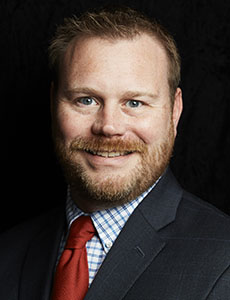Social Media and the Workplace — It’s Complicated
Given the pervasive use of social media, employers may be unsure how to navigate the effects of personal posts that spill into the workplace.
A federal appeals court ruling in May 2024 gives us a clear and cautionary guidepost. In a case involving an employee’s posts on a personal social media account, the court found the online conduct created an unlawful hostile work environment because the posts related directly to the workplace.
This presents a real-world incentive for organizations to create guidelines for acceptable personal social media use that affects the workplace.
Importantly the court rejected the idea that only behavior occurring in a physical workplace is relevant. The court emphasized how social media’s omnipresence makes it possible to harass and bully inside and outside the workplace.
In this case, despite learning of serious alleged harassment, the employer didn’t take prompt, effective measures to address an employee’s complaints about a colleague’s Instagram account. The account was well-known and followed by many colleagues of both employees.
The court’s ruling is consistent with 2024 Equal Employment Opportunity Commission (EEOC) guidance. The EEOC makes clear harassment can contribute to an unlawful hostile work environment even if the behavior isn’t directed at a particular employee.
The EEOC cautions that conduct occurring outside a person’s presence can contribute to a hostile work environment if the person is aware of it and it’s “sufficiently related” to their workplace.
So in a situation where your company is made aware of harassing social media posts by one employee that negatively affects another employee but fails to act, your company may be held liable.
At United Educators, an organization exclusively serving educational institutions, we’re acutely aware of the increasingly complex workplace landscape. At the same time, we also recognize there are reasonable steps organizations can take to help prevent discriminatory and harassing online behavior from affecting the workplace.
Raise Understanding of Prohibited Discriminatory or Harassing Speech
Explain to staff that your company won’t tolerate discriminatory or harassing social media posts from one employee about another.
Take seriously any reports flagging such posts. and promptly investigate whether these constitute unlawful workplace harassment or are merely offensive.
Apply a “totality of the circumstances” test to determine whether behavior creates a hostile work environment that violates Title VII of the Civil Rights Act of 1964. Title VII prohibits discrimination (including harassment) based on race, color, religion, national origin, or sex.
After receiving a report of possible harassing social media posts:
- Respond as soon as possible, preferably within 24 hours.
- Identify concerning posts and collect available information.
- Interview witnesses about subjects of concern, as appropriate.
- Develop a specific intervention or prevention strategy, as necessary.
- Communicate with staff about the situation, as needed.
- Report threats to law enforcement, if necessary.
Act immediately to prevent harassment as defined by federal and state anti-discrimination laws.
Develop Guidelines for Social Media Use
Consider providing employees with guidelines that would help them use social media responsibly.
Actions to consider:
- Explain what constitutes unlawful harassment.
- Be upfront that your company reserves the right to examine employees’ personal social media accounts if those posts affect coworkers.
- Educate staff on the lasting impact online language may have. You can ask thought-provoking questions such as: Would you want to see your post in media headlines tomorrow or even 10 years from now?
- Advise employees to protect themselves from damage to their personal and professional reputations when commenting online, including verifying information before posting.
- Inform staff that they may be personally liable for content posted on social media, including content that is defamatory, libelous, or obscene.
While judicial guidelines will continue to evolve in this turbulent space, taking these steps can help prevent harassing behavior and help address an emerging liability risk. &










